Acorns have been eaten and revered for their nourishment the world over—by Celts, by Koreans, by the native people throughout North America. Perhaps your ancestors were acorn eaters – you might be surprised Long before the cultivation of wheat or the advent of agriculture, people from Mesopotamia to China, from ancient Rome to northern Africa, from the Atlantic to the Pacific, relied on oak trees and their acorn crops for food. And what a nourishing, robust food it is! On his long treks through the Sierra Nevada mountains, John Muir swore by the hearty acorn bread he learned to make from the native people of California. What’s more, the preparation of acorn food is easy, and it reweaves you into the web of life..
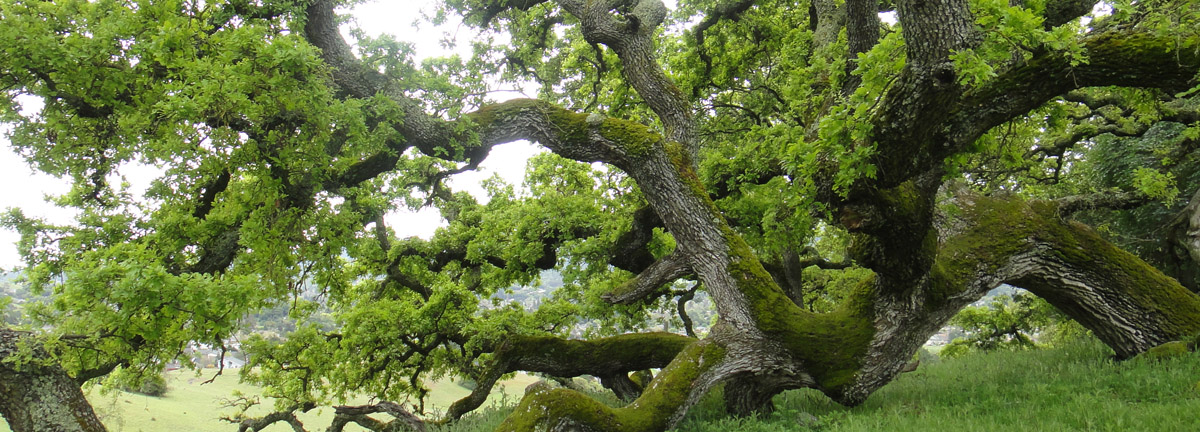
The oak tree, a wild being, grows of its own will in its natural habitat, fed by seasonal rains and sunshine. In a robust year, a single valley oak can provide up to 1000 pounds of acorns. In California alone, we have 20 different species of oaks, each adapted to California’s great diversity of ecosystems. Acorns are high in protein, carbs and fat, and were the staple food for the native people of California, much as wheat is to us today.
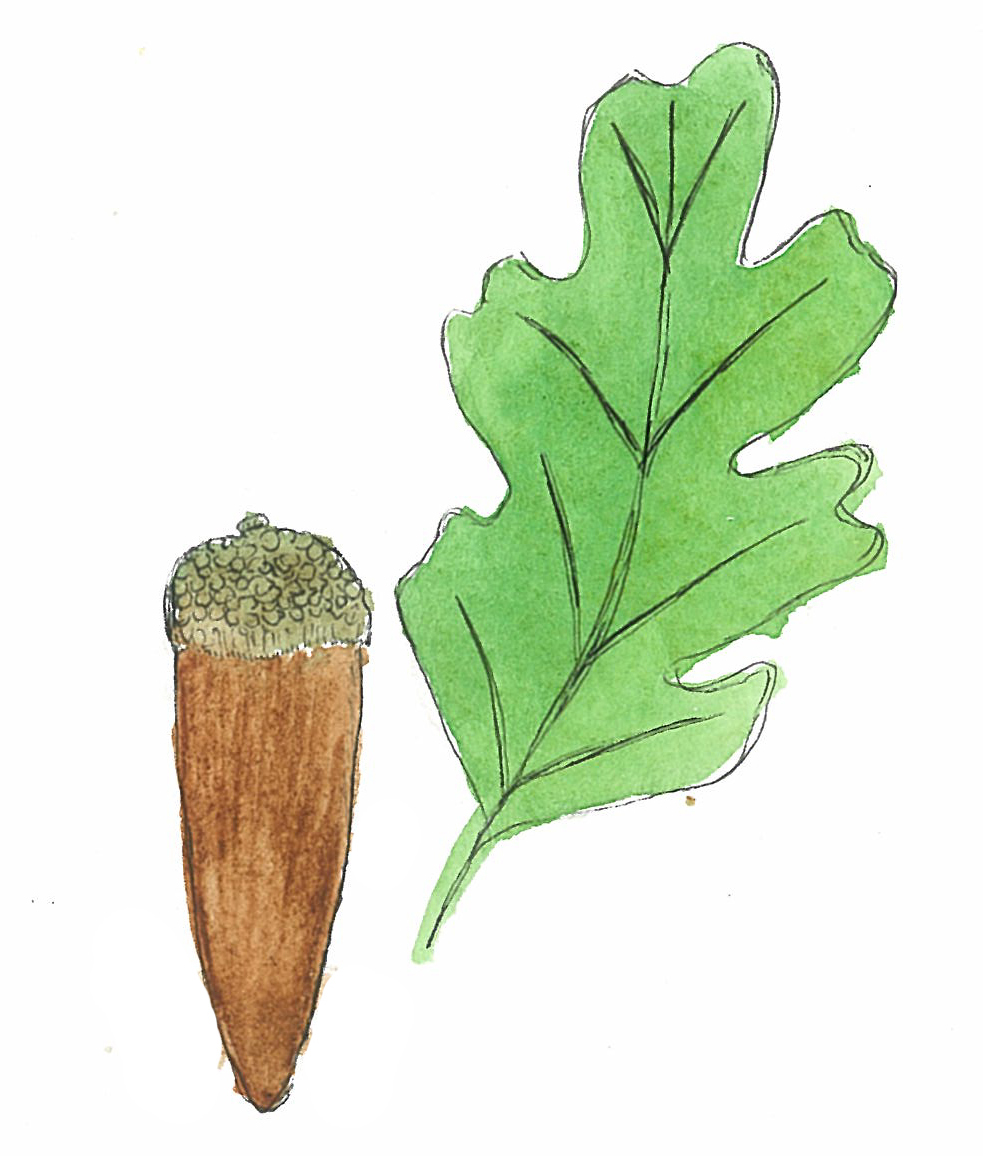
Long ago, with the advent of agriculture, grains replaced acorns throughout the landscapes and cultures of Europe and beyond. In California, we have converted vibrant, ecologically rich oak lands to agricultural fields of monocrops. This means tractors and earthworks, irrigation and fertilizer. Now, all the animals that once thrived in oak lands are hungry, and they must turn to agriculture too! This results in the use of pesticides and a generally adversarial relationship with wildlife.
Relying on water-intensive monocrops requires more energy and causes more damage than relearning the way of the oak. All around us, oak trees thrive, dropping their acorn-food en masse. Think of it—the acorn, wild food given freely by the great oaks, grown in harmony with the water, the soil, the air, the sun. Why not restore oak lands and eat acorn? Nuttier ideas have taken root in California!
THE OAK WEB OF LIFE
When you eat acorn, you partake of all that the oaks are hitched to. Oak trees take sunshine, mingle it with rain and earth, and create nutritious acorns. The whole web of life runs on this food made from sunshine: squirrels, birds, deer, bears, insects and so many more.
Over 5000 species of insects find their homes in oak ecosystems. In a year, one large oak tree can provide habitat and food for over one million individual insects. Over 100 species of birds depend on oak lands for their food and shelter. Just one scrub jay or squirrel can gather and stash thousands of acorns a year. However, they only recover half of the buried nuts, thus planting new generations of oak trees.
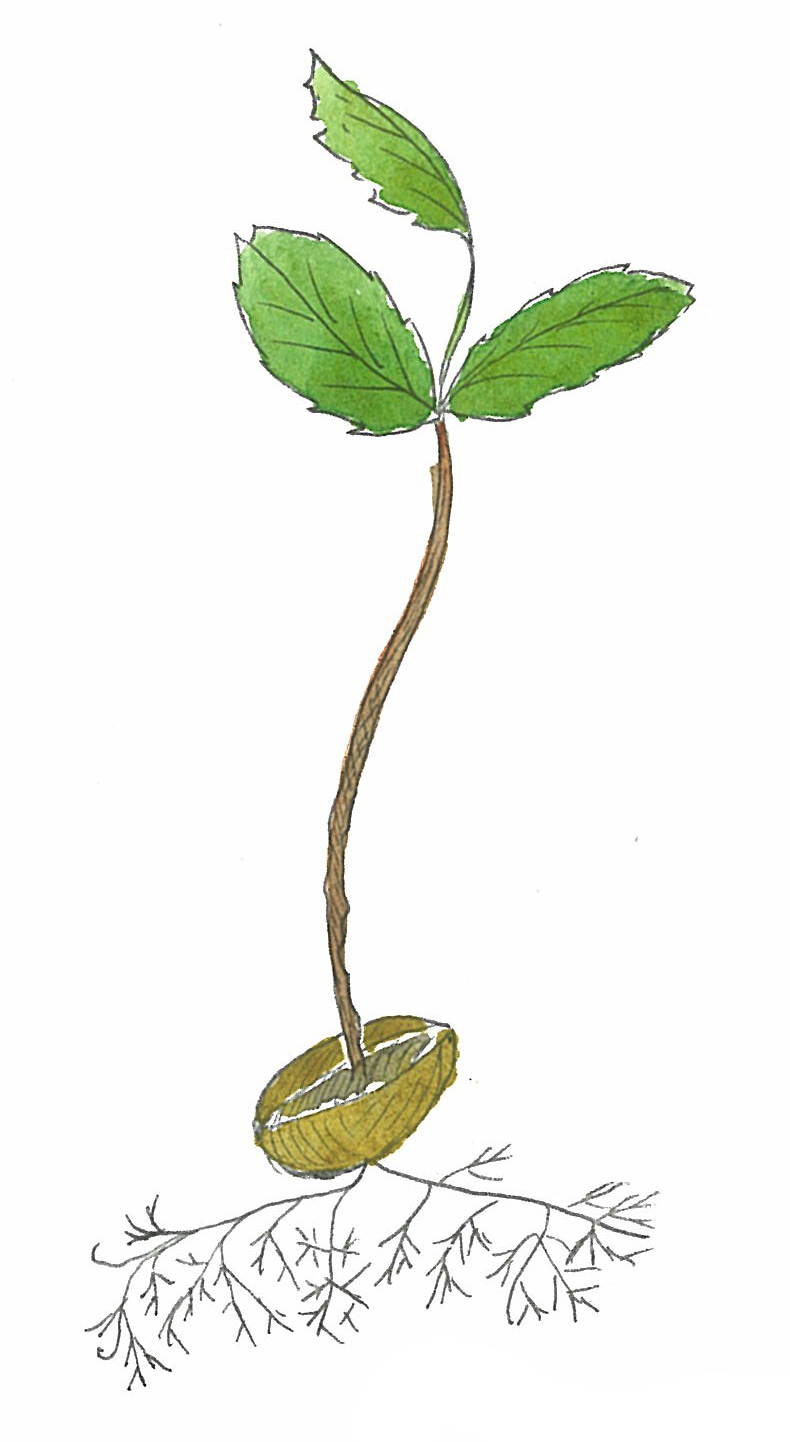
When you eat acorn, you partake of all that the oaks are hitched to. Oak trees take sunshine, mingle it with rain and earth, and create nutritious acorns. The whole web of life runs on this food made from sunshine: squirrels, birds, deer, bears, insects and so many more.
Over 5000 species of insects find their homes in oak ecosystems. In a year, one large oak tree can provide habitat and food for over one million individual insects. Over 100 species of birds depend on oak lands for their food and shelter. Just one scrub jay or squirrel can gather and stash thousands of acorns a year. However, they only recover half of the buried nuts, thus planting new generations of oak trees.
The acorn woodpecker relies heavily on acorns (naturally), filling elaborately constructed granaries (dead tree trunks or telephone poles drilled with thousands of acorn-sized holes) with carefully stored nuts to last through the year. Acorn woodpeckers live in gregarious family groups and do not migrate, because the acorns they gather every autumn provide enough food for them year-round. Even when there aren’t acorns to gather, these woodpeckers are always tending their granaries, moving dry and shrunken acorns to snugger holes, defending their huge caches from thieves. Some evidence suggests that acorn woodpeckers are actually farming these abundant nuts both for their nourishment and for the bugs that feast on them! Many native peoples associate woodpeckers with the shamans because, like the shamans, the woodpeckers drum and keep rhythm.
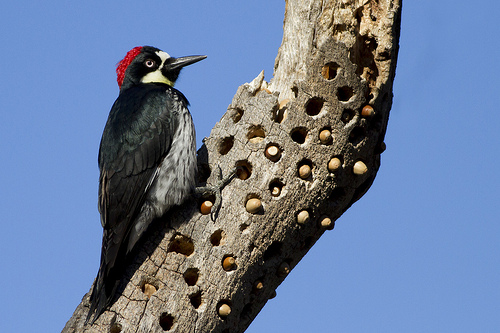
Many other animals rely on the acorn crop come autumn too. This is the driest time of year in California; the land has often gone more than six months without rain. Mule deer, for example, rely on acorn-nourishment during the fall, especially since the fall is also the rutting (mating) season, in which the males in particular are expending a lot of extra energy. One mule deer can eat more than 300 acorns a day.
Of course, bears love acorns too. In Old California, there are descriptions of oaks so frequented by grizzly bears that their trails made a wheel of deep spokes around each trunk, where they would come every autumn to feast on fallen acorns. Studies show that when deer, gray squirrels and bears have enough acorns to eat, they have healthier offspring. New generations of many animals are linked to new generations of oaks!
Oaks are keystone species meaning that the whole web of life is disproportionately dependent on them and if the oaks suffer, everyone suffers. If the oaks are happy, everyone is happy.
HUMANS ARE PART OF THE WEB OF LIFE:
Native Californians traditionally had very close relationship with oaks. From the indigenous perspective, the relationship between humans and oaks is fully reciprocal—our love, care and appreciation for our oaks is returned by their gratitude in the form of bountiful food, shelter, tools and spiritual connection. Not only were indigenous Californians dependent on acorns from oak trees, they also relied on the animals, like deer, that depend on oak ecosystems. Acorns were the staple food for about three-quarters of all native Californians, which means they were eaten almost every day. Humans have managed oak ecosystems for thousands of years by tending trees and using fire to control less desirable species like California bay laurel, as well as acorn pests such as acorn weevils. The majority of indigenous Californians took part in acorn ceremonies that honored the oaks and celebrated the acorn crop. Many native Californian tribes still hold ceremonies to celebrate the acorn crop.
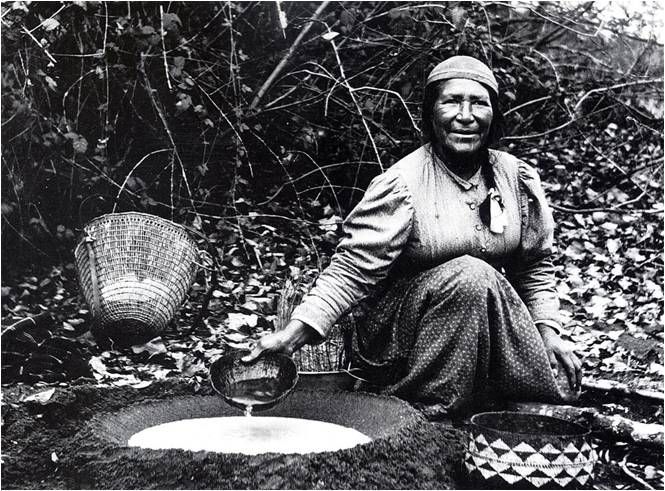
Humans are still an integral part of the web of life of oaks; whatever we do impacts the oaks, for good or bad. Sadly, our change in management practices over the last two hundred years has impacted our oak ecosystems and resulted in major loss of diversity and health.
The relationship between humans and acorns is not limited to native California, or even native North America. Prior to the advent of full-scale agriculture, acorns were eaten all around the world, from China to Crimea, from the Mediterranean basin to the British Isles. The Tartars of Crimea were still eating a thick-crusted, spongy acorn bread at the end of the 19th century, and there is evidence that the peoples of Catal Huyuk, an early Neolithic (circa 7500 BCE) settlement in the Fertile Crescent region of Turkey, were grinding and storing acorns long before they were farming wheat and barley. Pliny the Elder himself (the Roman naturalist, historian and philosopher extraordinaire, as well as naval captain and army commander) wrote: “acorns at this very day constitute the wealth of many races.” Did these cultures also celebrate the acorn crops with ceremony? Did they also manage their oak lands for acorns? We know that the native people of California did for at least 10,000 years, and still do, because of both archaeological evidence and the word of living elders. But for the ancient cultures of Northern, Southern and Eastern Europe, all we can do is guess.
We do know that in many of the ancient cults of Europe, oaks were honored as a portal to the divine. The oak is, after all, the tree of Zeus and of Thor, both thunder and lightning gods associated with the highest-flying bird, the eagle. Oaks are lightning rods. They tend (especially in the once-forests of Northern Europe, where such lore comes from) to be taller than other trees around them, and also to hold a lot of water. Both of these factors draw electricity. Oak trees often survive lightning strikes and continue to flourish afterward. It is no wonder then that Zeus and Thor, both gods with a lightning bolt in hand, were associated with the mighty oak.
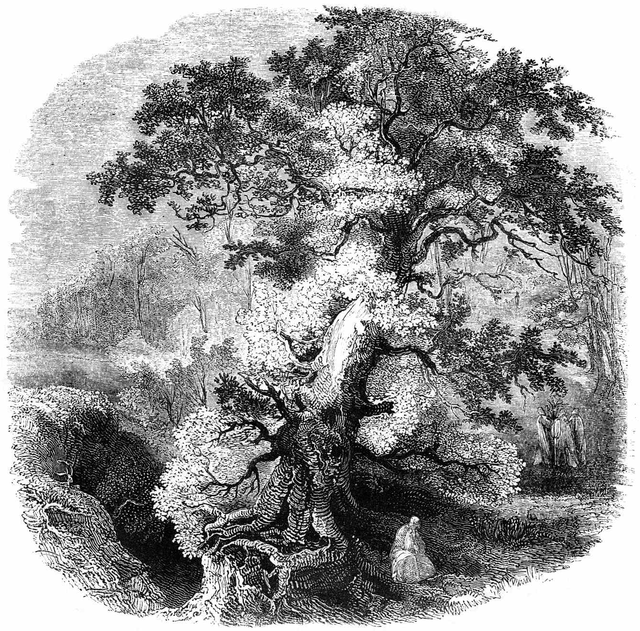
And, speaking of lightning and rain, the health of the acorn crop depends on the amount and timing of the rain that has fallen in the past year. Oaks will often drop their acorns one to two days before the rains come. In traditional California Indian cultures—and, one might imagine, the oak-worshipping tribal cultures of old Europe too—ceremonies were held not only to celebrate the coming acorn crop, but also to control the weather, so that the rain fell at just the right time (and in the right amount) to produce optimum acorns.
The oak tree was also deeply sacred to the Celtic Druids, that shamanic class of healers, seers, weather-makers, and storytellers who acted as the priests and the historians of their people. The very term “Druid” is thought to come from the words dru (oak) and wid (to see or to know). According to Pliny the Elder, Druids held all of their ceremonies in sacred oak groves, and interestingly, many early Christian churches were built in oak groves, probably because they were already places of worship. Indeed, Abraham, the father of the Jews, first saw the Jewish God under the tree of Moreh (teacher or oracle tree) which many scholars believe was an oak tree.
From the culinary to the cult, it is clear that human beings have a very ancient, very profound relationship with the oak trees and their acorns. Around the world, we once cared for our oak trees, and they in turn rewarded us with food, tools, housing and deep spiritual connection to the great web of life. In California, our oak lands are suffering and dying as we carry on with our ridiculously destructive, water-intensive agricultural systems. And still, every year, the oak trees drop their bountiful gifts across the ground, as if waiting for us to remember. What if acorn—the food, the process, the web of life each nut represents—is the answer to everything from environmental ruin to food insecurity and even nature deficit disorder? What kind of ancient solutions can we apply to our modern problems? And what wisdom can the oaks give to us about living with patience and integrity in these times? Can we weave ourselves back into the web of life with these mighty acorns in our hands?
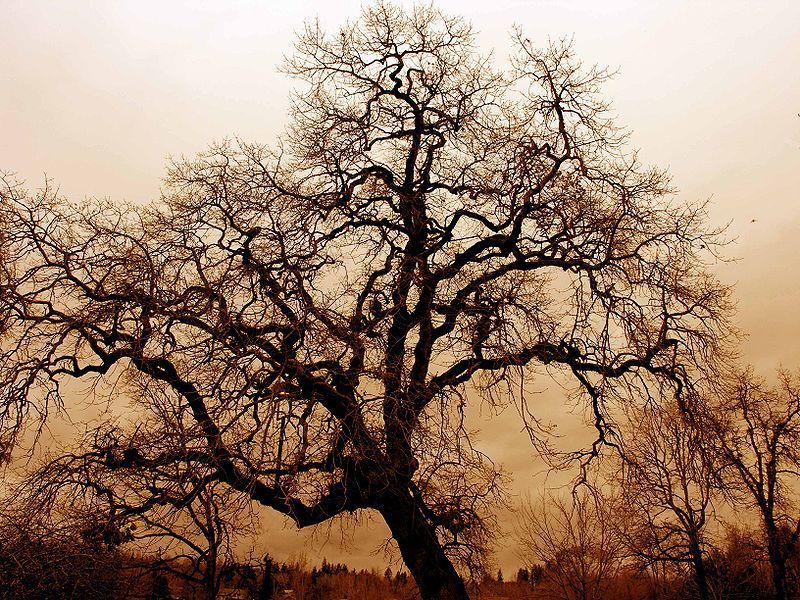
They told me when it comes, get out there and gather even if it’s one basketful so the acorn spirit will know you are happy for the acorn and next year the acorn will come.”
HOW TO EAT ACORNS
Finding your trees: While all species of oak acorns are edible, different species vary in taste and amount of work required to crack and process. Oak trees do not grow acorns every year, yet can have bumper years when just one tree may produce 500-1000 pounds. In places with a variety of oak species, there is rarely a year without an acorn crop.
To identify your oak tree try using: Pacific Coast Tree Finder – A Pocket Manual for Identifying Pacific Coast Trees – Available online at www.naturestudy.com (less than $6) OR www.calflora.org. Type “Quercus” into the “Plant Name” field to see pictures of most California Oaks.
Collecting acorns: Acorn season is from August through November. Collect the acorns when they are brown – not green. Oak trees generally have two drops of acorns. The first drop is primarily the defective and buggy acorns aborted early by the tree. The first drop of acorns should be left for wildlife to eat. If you know a tree that has maturing acorns you may spread a sheet underneath the tree to catch acorns when they fall or just collect from the ground. Discard any acorns that feel very light or have bug holes. Collect enough acorns for 2-3 years because the same tree will probably not produce again for that long.
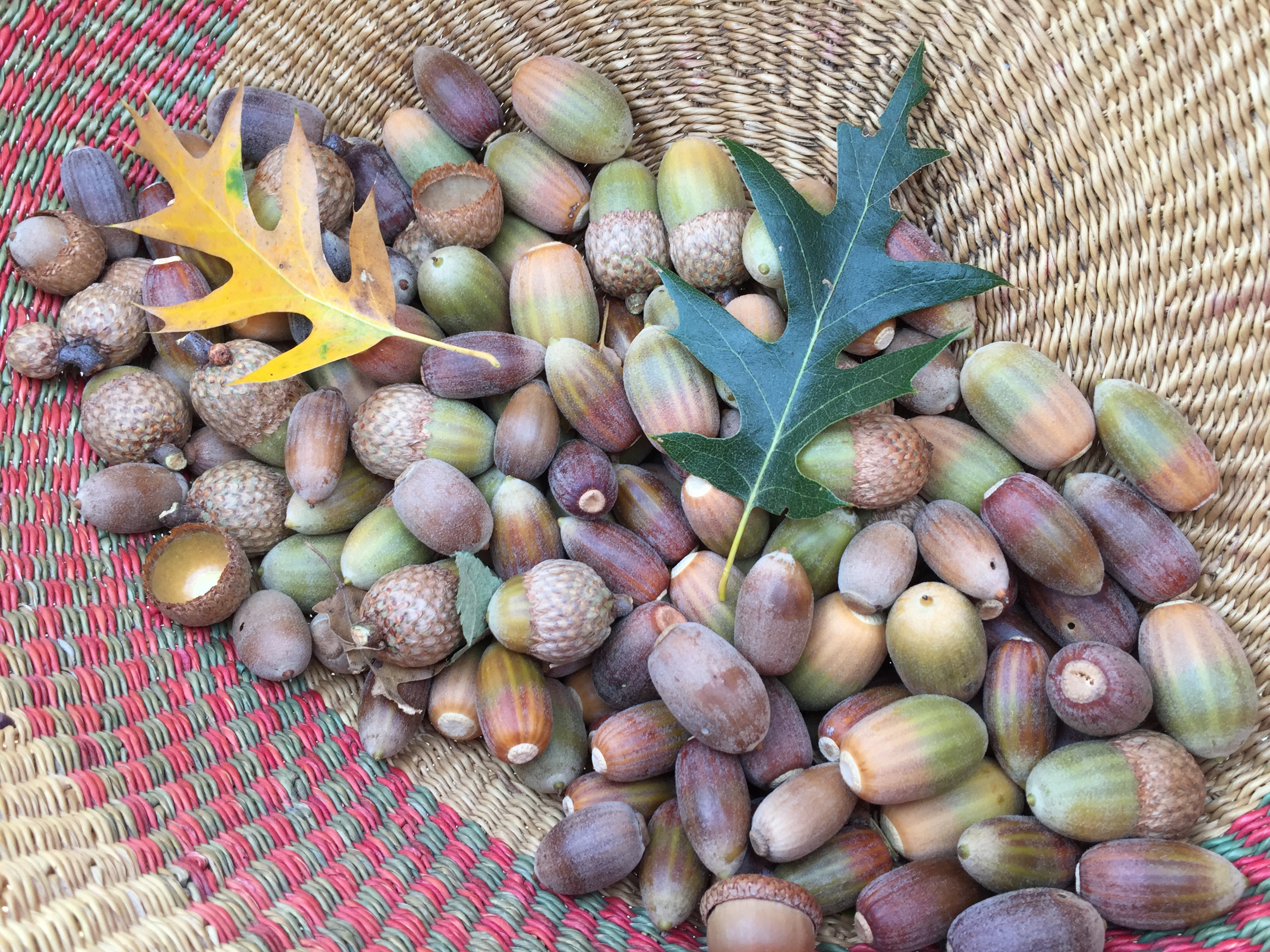
Leaching and Grinding: Leaching washes the bitter tannins from the nuts. The easiest method is to crack nuts and put whole nut meats in a jar. Every time you pass your sink pour out the old tannic water and put fresh water in. Leaching will take three to ten days, depending on the species of acorn. When your acorns don’t taste bitter, they are done.
Drying Acorns: Acorns need to be dried for storage or they will mold. Because native people spread the acorns out in the sun to dry, they were limited to using smaller acorns. You can use larger acorns like valley oak (Quercus lobata) if you change the technology by using a warm oven or a food dehydrator. A great food dehydrator is the Excalibur (www.excaliburdehydrator.com).
Storing: Store acorns in shells in breathable material like cardboard boxes or burlap sacks. Keep in a dry place away from rodents and wildlife who would love to find your cache. Every few months shake the boxes and rotate acorns to avoid mold and fungus. If possible include a small branch of California bay laurel leaves in with your acorns to discourage insects.
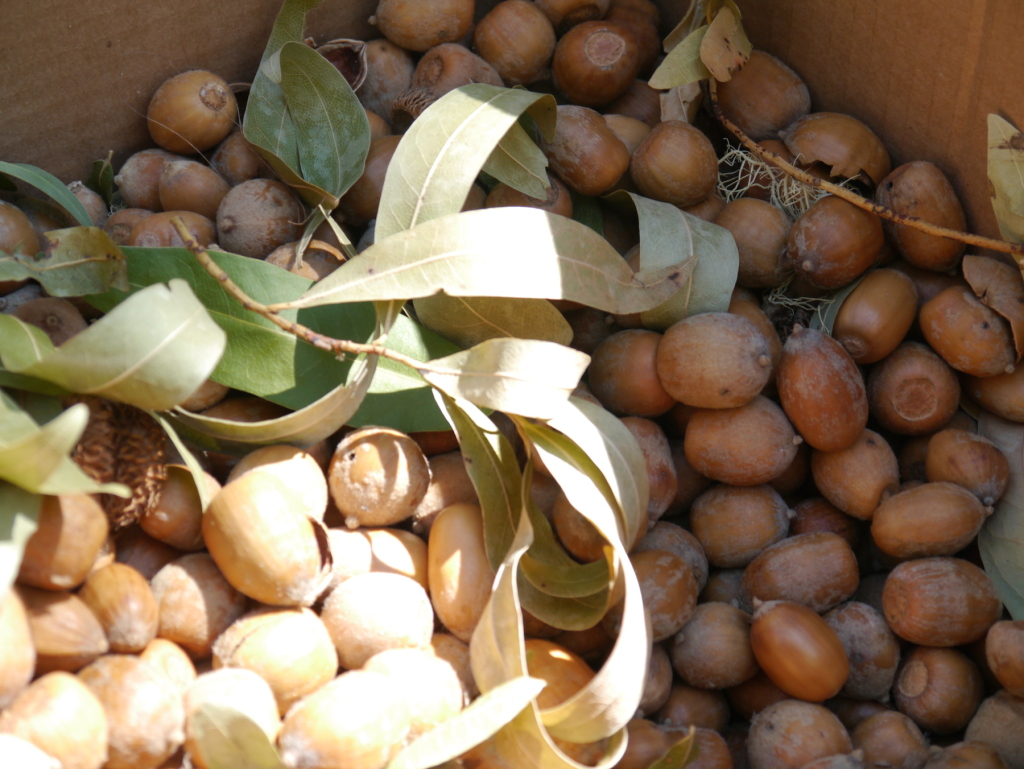
Tan Oak Acorns stored in Cardboard box with Bay leaves to deter insects
Cracking and Cleaning: You can crack acorns like any other nut, using rocks and nutcrackers. Kids love to crack acorns. Some acorns have a papery inner shell. You will need to separate this from the nuts. You can try winnowing the nuts and letting this membrane blow away in the wind.
Leaching and Grinding: Leaching washes the bitter tannins from the nuts. The easiest method is to crack nuts and put whole nut meats in a jar. Every time you pass your sink pour out the old tannic water and put fresh water in. Leaching will take three to ten days, depending on the species of acorn. When your acorns don’t taste bitter, they are done.
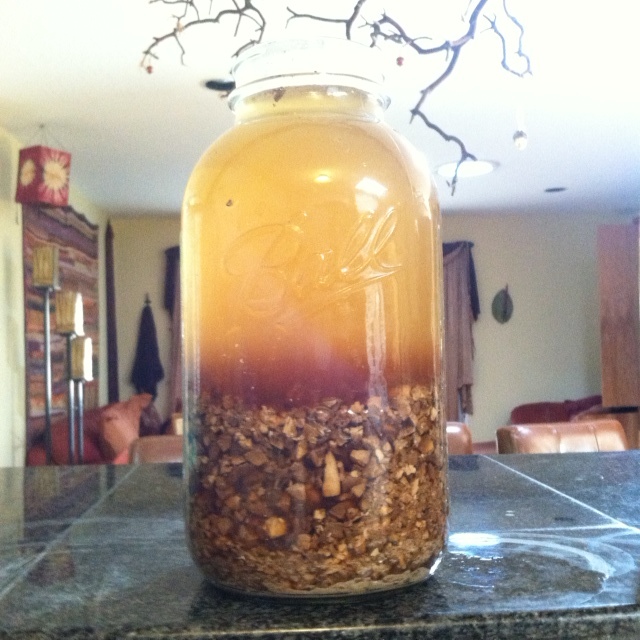
To speed up the process, grind your acorns before leaching in order to increase the surface area, like native Californians have done for thousands of years. Traditionally, people used a mortar and pestle for dried acorns. A contemporary method is to rehydrate acorns and grind them in a blender or Cuisinart.
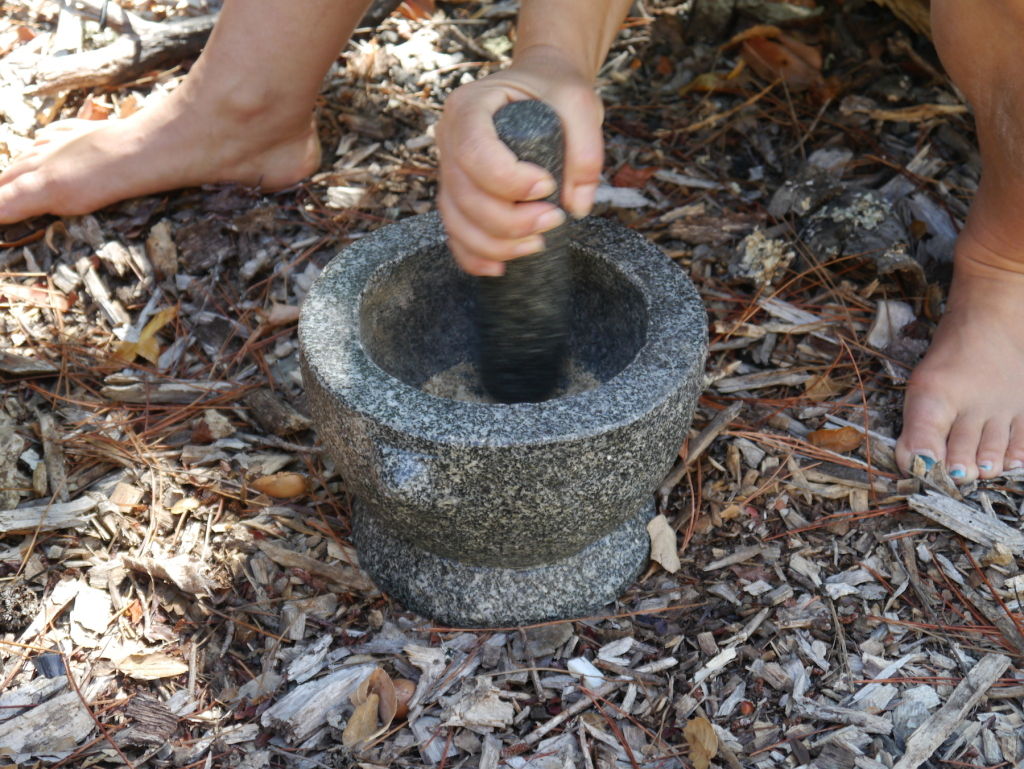
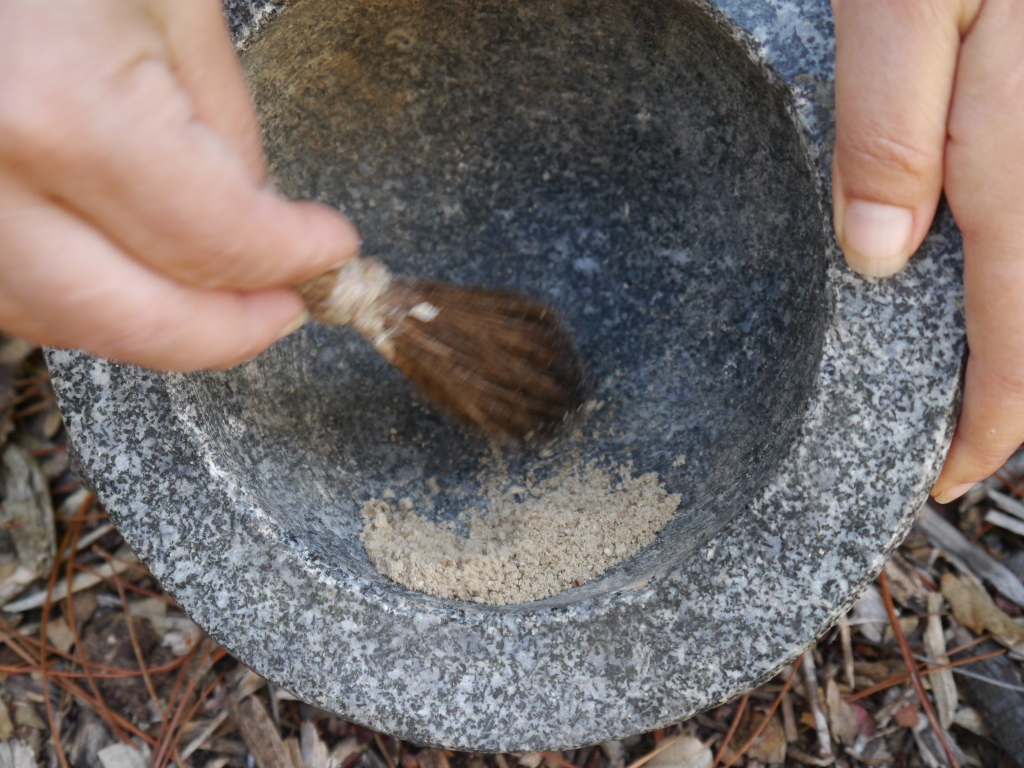
Eating: Once the acorn flour is ready you can use it immediately or store it (wet or dried) in your freezer. Try substituting your prepared acorn flour for other nuts, cornmeal or oatmeal in recipes. Acorn flour on its own has a very mild, nutty flavor, so don’t be afraid to spice things up! If you craft a winning recipe or you discover great processing methods please send and email to jolie@gowildconsulting.com so recipes and info can be compiled.
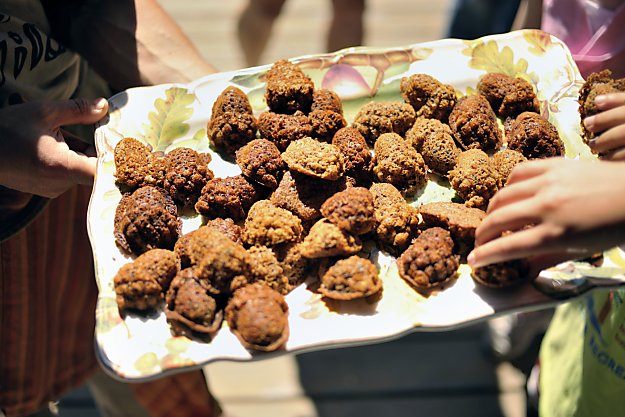

I feel Blessed. My2 acres are mostly red oak and hickory. I noticed alot of acorns on the ground yesterday. I didn’t know you could eat acorns, so glad i have plenty to try. Has anyone made an acorn pie instead of pecan?